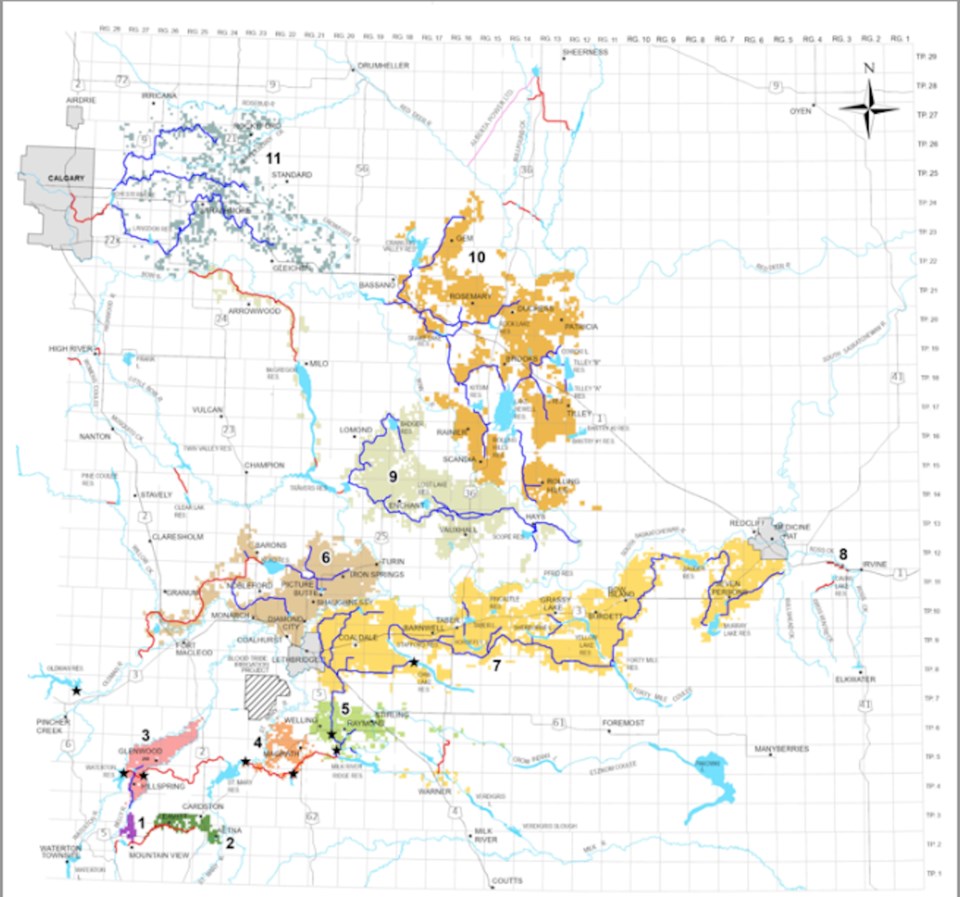ATHABASCA — The Alberta government has reiterated its increased support measures for farmers and agricultural producers across the province amidst a dry winter with many Albertans concerned about drought.
In a Jan. 11 statement, Minister of Agriculture and Irrigation RJ Sigurdson announced the province has invested $933 million in funding for irrigation system expansion and modernization, and an additional $7 million to investigate the feasibility of a large irrigation project in east-central Alberta.
“Alberta’s government is here to lend a hand to our agriculture and agri-food industries, which not only produce the best food in the world but also employ thousands of Albertans,” read the release.
Some $815 million in funding was initially announced in 2020, followed by an additional $117.7 million in late 2021. The investment was labeled as historic when first announced and is an amalgamation of funds from the Alberta government, as well as participating irrigation districts in which the expansion and modernization work will occur.
A loan of $407.5 million was granted by the Canada Infrastructure Bank, a sum that participating irrigation districts will be responsible for repaying. The aim of the project is to add an additional 230,000 acres to the nearly 1.5 million acres already under irrigation in the southeast corner of the province.
According to the Western Producer, 10 irrigation districts are participating as partners: Leavitt, Ross Creek, Taber, Eastern, Western, United, Bow River, Lethbridge Northern, St. Mary River, and Raymond irrigation districts are involved.
Regional drought concerns
Alberta is currently sitting at stage four on the five-stage scale for water shortage management after three years of water shortages and a winter with a less-than-average snowpack. And for producers outside of southern Alberta, irrigation is a practice not commonly used.
“That’s something that occurs in the southern half of province,” said Athabasca Reeve Brian Hall.
Kelly Olsen, owner and producer at locally operated Ole Farms, said adequate rainfall is typical for the region, and in conjunction with high costs of irrigation equipment and water, the practice isn’t necessary in the region.
Like many Albertans, Olsen said the risk of drought is on Ole Farms' radar, although not to a great extent. “It’s always a concern, it’s a little early to get too worried about it. We haven’t got any snow, so that’s very unusual for this time of year,” he said.
Athabasca County Fire Services said in a Dec. 19 Facebook post, “Based on the total amount of precipitation received in the last 90 days, all of Athabasca County is experiencing a 1 in 100 year dry spell.”
Although predictions for the upcoming growing season conditions are subject to change throughout the winter, Hall said the effects of a dry season would be palpable.
“It would be really devasting for the region if there is a state of prolonged drought,” said Hall. “Agriculturally, obviously production is down, yields are down, revenue is down, that will impact how what everybody has in terms of cash to spend and to put back into the economy.”
“It’s also hard on the longevity and viability of farms,” added Hall. “Drought also increases our fire risk and that’s something to really keep an eye on this spring.”
While producers in Northern Alberta won’t see direct benefits from the province's infusion of cash into irrigation in the southeast corner of Alberta, growers and farmers in other areas aren’t left to fend for themselves.
Crop insurance, such as Moisture Deficiency Insurance plans are offered through Agriculture Financial Services Corporation (AFSC), can act as a cushion for operations such as Ole Farms, which has been in business in the area since 1911.
“I would say we’ll get somewhat of a claim maybe once in ten years,” said Olsen. “2002 was extremely bad, and then in 2021 again, it wasn’t nearly as bad but we were in a claim position on the lack of moisture and that helped.
“It’s a very smooth process,” he continued. Olsen said payouts are determined on rainfall measurements collected from stations across the province, and automatically calculated based on AFSC data.
According to the province's statement, $326.5 million was provided by AFSC in 2023 to Canadian farmers and producers facing dry conditions.



